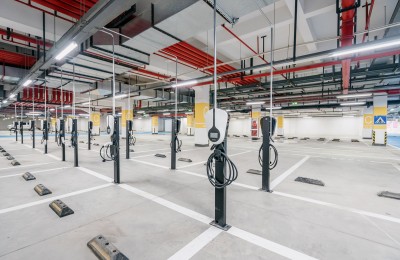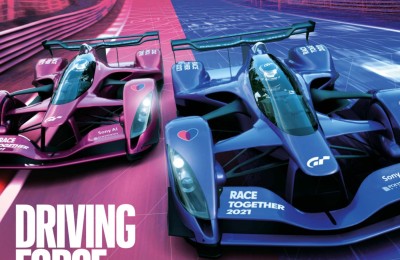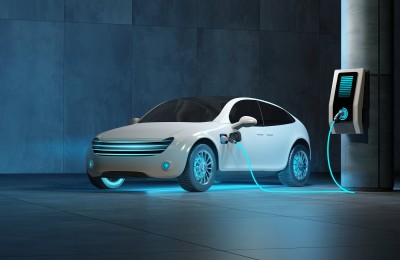Robots gather at the Winter Olympics, and the unmanned service is coming?
Service robots are everywhere, from Olympic villages where athletes live to competition venues.
Robots gather at the Winter Olympics, and the unmanned service is coming?
In 2022, the opening ceremony of the Beijing Winter Olympics is “ethereal, romantic, modern, and technological”. The comprehensive application of scientific and technological innovations makes it so different. Not only does it use digital performance and simulation technology throughout the process, but it also pioneers and comprehensively uses artificial intelligence. , 5G, AR, naked eye 3D and cloud and other scientific and technological achievements.
In addition to the full sense of technology at the opening ceremony, the “Science and Technology Winter Olympics” is also the main feature of this Beijing Winter Olympics. On February 2, the first day of the torch relay of the Beijing Winter Olympics, the news of “Robot Underwater Transmission of the Winter Olympics Torch” aroused heated discussions. This is the first underwater torch relay between robots in Olympic history.
It looks like a curling bowl in appearance. Holding a flaming torch, it spins along the curling track and slides into the ice hole. At the same time, the underwater robot was also ready. Its robotic arm held the torch tightly, kept approaching the amphibious robot, and received the fire accurately within 10 seconds, completing the transfer.
At the same time, guidance robots, delivery robots, logistics robots, cooking robots, food delivery robots, patrol robots, cashier robots… From the Olympic village where athletes live to competition venues, service robots are everywhere.
Robots help Winter Olympics epidemic prevention
The Canadian Broadcasting Corporation (CBC) Sports channel once released a video in which a robot at work found that foreigners who greeted it were not wearing masks. So, he immediately stopped his “steps” and issued a reminder to “wear a mask”. After the photographer thanked him, the robot left.
The robot in the video is the inspection robot of the Beijing Winter Olympics. It integrates functions such as public space inspection, mask detection and early warning, thermal infrared temperature measurement, and hand disinfection, ensuring both safety and epidemic prevention. When patrolling, it can find people who are not wearing masks within a radius of 5 meters, and issue a reminder to wear masks. The top of the head is also equipped with a non-contact hand disinfection device, which automatically sprays disinfectant through the infrared sensing device of the overhead disinfection device.
In fact, this is just the tip of the iceberg of robots helping the Beijing Winter Olympics epidemic prevention work.
Different from the previous Winter Olympics, the Beijing Winter Olympics is not only a competitive event, but also faces a major test of epidemic prevention and control. Therefore, it has become an important task to use robots to reduce human contact and form an epidemic protection network for the Beijing Winter Olympics with a large flow of people and complicated personnel.
At the entrances of major venues and Winter Olympic Villages, participants do not need to take off their masks, and can perform 8 inspections in one second, including identification, intelligent temperature measurement, health treasure, national health code, nucleic acid detection, vaccination, public security networking, and electronic registration. link, and the temperature difference can be controlled within 0.2 ℃.
Entering the venue area, robots are responsible for cleaning and disinfection in various large public areas such as the audience area, media work area, staff area, athlete area, and competition hall.
The chassis of this type of atomization and disinfection robot is equipped with vision sensors and lidars, which scan and identify the road ahead and avoid obstacles. The atomizing disinfection robot can hold 16 liters of disinfection water at a time, and spray the medicine through the four-way nozzle on the top of the head. The disinfection area of a single robot can cover a maximum of more than 1,000 square meters, and a single battery life can reach 4-5 hours.
Compared with the traditional manual disinfection method, the robot can carry out the disinfection operation according to the pre-set tasks, and the staff can remotely control the suspension, which can avoid the risk of personnel being infected and being injured by chemical disinfectants during the operation. From this point of view, robots have unparalleled advantages in terms of disinfection effect, disinfection efficiency, and safety.
Unmanned robot restaurant
In addition to helping epidemic prevention, robots are still acting as “volunteers”, “waiters” and “cooks” at this Winter Olympics.
As the largest non-competition venue for the Beijing Winter Olympics, the Winter Olympic Village is also one of the venues with the longest service guarantee period. The Winter Olympic Village is also equipped with different types of robots. For example, the delegation reception center located in the square area, which is responsible for the registration of delegations and the first station of security inspection during the game, has set up reception robots to provide volunteer guidance, sign guidance, etc., which can guide athletes to the luggage storage area or lead athletes to the At the verification point, the athlete can check in after the verification is correct.
This type of reception robot has various functions such as indoor positioning, path planning, pedestrian and roadblock obstacle avoidance, and perception of elevator congestion. The human body is detected by the 1200-pixel camera in front of the head, and when the user is identified within the maximum distance of 10 meters, the broadcast of the solicitation language is triggered to actively greet. When the user walks in and the distance between the human and the machine is 1.5 meters, the robot is awakened and can perform human-machine interaction.
Of course, this is not the most concentrated place for robots in the Beijing Winter Olympics. The restaurant in the main media center of the Beijing Winter Olympics is the most concentrated place for robots, and it became an “Internet celebrity” before the opening of the Winter Olympics.
It is understood that the main media restaurant on the basement floor covers an area of 2,500 square meters, of which the automatic bar area covers an area of 412 square meters, the Chinese food cloud rail area is 646 square meters, and the media dining area is 1,522 square meters, with a total area of 5,360 square meters.
The entire Beijing Winter Olympics kitchen was empty, and the cooks and service staff were all robots. It is understood that the smart restaurant is equipped with 120 food-making robots. The intelligent and automated catering equipment in the restaurant can run 24 hours a day, ensuring the automation of the whole process of ordering, preparing and serving food, and can serve thousands of people at the same time. .
Among them, you only need to scan the code on your mobile phone when ordering. In addition to authentic Chinese dishes on the menu, robot chefs can also create burgers, pizzas, cocktails and other types of dishes. All robots are behind clear glass so everyone can see the cooking process.
After the dishes are made, the machine will respond to them, and through the calculated optimal path, the dishes will be transported to the table through the transparent glass tracks at the top of the restaurant. Generally, it takes 2-4 minutes to deliver meals. When the robot moves over the desired table, a tray of food “falls from the sky” along with the lowered cable.
In addition, coffee robots are also set up in the restaurant. As long as the start button is pressed, the robot can start taking beans, weighing, taking water, adding water, brewing, and making a cup of “hand-brewed coffee” in 4 minutes.
In addition to the coffee robot, the intelligent bartender robot can also complete complex blending like a human bartender, and at the same time perform the intelligent shaking action, and it only takes 3-5 minutes to make a “high-value” cocktail.
It can be said that the Beijing Winter Olympics Media Restaurant is the smartest and smartest restaurant in the history of the Olympic Games. The whole process of cooking and serving robots is intelligent, and it is not only delicious, efficient, but also clean and hygienic.
Robots are everywhere
Logistics and distribution is also another important task during the Beijing Winter Olympics. In the context of the normalization of the epidemic, by configuring logistics robots, the delivery of goods can be more efficient, while reducing human contact.
In the 4-meter buffer zone between the two layers of iron horses inside and outside the closed loop of the Winter Olympics venue, intelligent logistics robots undertake the work of transporting large items. It is understood that the intelligent logistics robot has a load-bearing capacity of 30-300kg, can move freely, avoid obstacles autonomously, automatically recharge, and can intelligently plan paths. Staff in the clean area can call the logistics robot to go to their location through the configured smart terminal.
After the vehicle reaches the boundary of the clean area and the buffer zone, the staff only needs to put the items on the logistics robot, and the logistics robot will transport them to the unloading station. When the robot arrives, it will notify the pick-up person through SMS, and the pick-up person will pick up the goods through the verification code. After delivery, the robot will return to its docking station for disinfection and charging.
The venue is also equipped with non-contact intelligent distribution cabinets, which stand on the separation line between the inside and outside of the closed loop. Through the design of “double-sided cabinets”, the two-way operation of depositing and picking up items can be realized, solving the problem of item distribution in the last mile. .
In the media center, a contactless delivery robot is equipped, which can not only reduce the flow of media personnel, but also ensure that all the information and materials needed by the media are delivered to each media area.
At Shangri-La Hotel, Shougang Park, one of the “official reception hotels for the Beijing 2022 Winter Olympics”, robots can also be seen delivering goods. In this way, hotel distribution can not only guarantee 24-hour service, but also reduce cross-contact between people.
In addition, the Yunding Ski Park is also equipped with an “intelligent sentinel robot” with AI monitoring function. With multi-spectral sensors as the core, it can perform target recognition, multi-target tracking, foreign object detection, and crossings in complex environments such as night and bad weather. Alarm and other functions, realize all-weather monitoring, effectively reduce the losses caused by various potential risks, and improve the security level of the Winter Olympics ski resort.
Epilogue
Before the Beijing Winter Olympics, with the continuous development and upgrading of technology and market, service robots have entered all walks of life, serving consumers from different aspects. The product types of service robots have also expanded from single sweeping robots, accompanying robots, and educational robots to high-end surgical robots, commercial cleaning robots, and distribution robots, with more and more product types.
According to data from IFR and the Chinese Institute of Electronics, the global service robot market will grow at a CAGR of about 21.8% from 2016 to 2020. It is estimated that the market size in 2021 will be about 12.52 billion US dollars. In 2022, the market size of service robots will exceed that of industrial robots. will exceed $20 billion.
During the Winter Olympics, the application of robots in scenarios such as material distribution, inspection reception, and epidemic prevention testing will inevitably push the application of robots to the top. (This article was first published on the Titanium Media App, the source of the pictures is from the Internet and enterprises, author|Han Jingxian, editor|Zhang Min)
 微信扫一扫打赏
微信扫一扫打赏
 支付宝扫一扫打赏
支付宝扫一扫打赏







